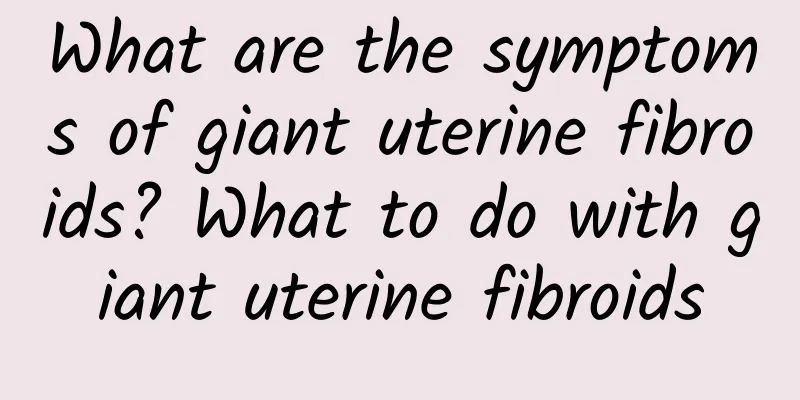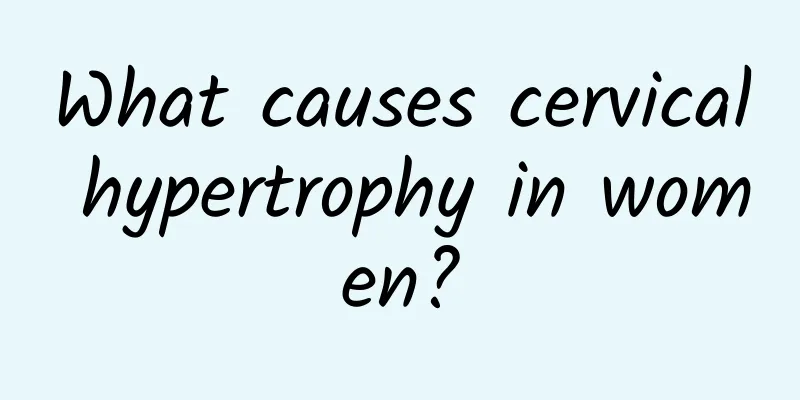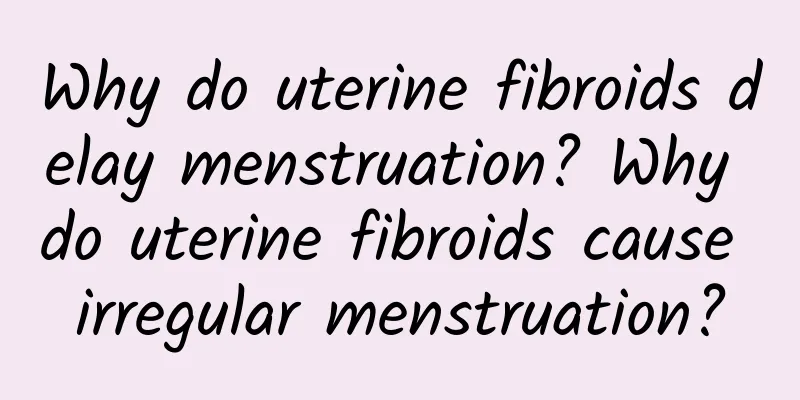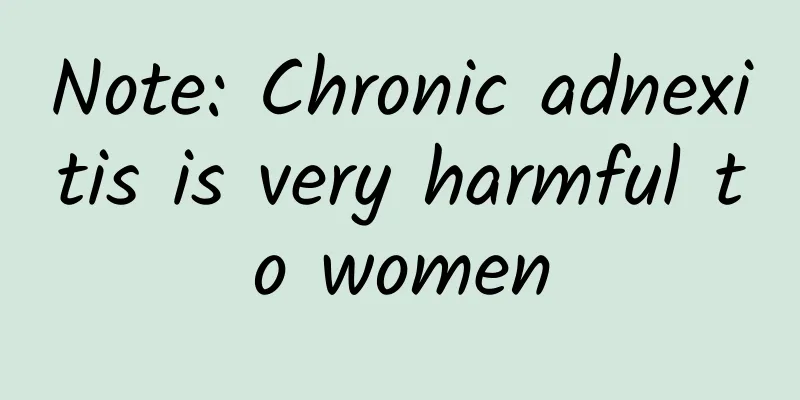What are the symptoms of giant uterine fibroids? What to do with giant uterine fibroids

|
What are the symptoms and treatment of giant uterine fibroids? Uterine fibroids are one of the most common benign tumors in women. Sometimes they develop into giant uterine fibroids, in which case the symptoms will be more obvious and may have a more serious impact on the reproductive system and overall health. This article will introduce the symptoms of giant uterine fibroids and the corresponding treatment methods. Symptom 1: Irregular menstruation Large uterine fibroids can have a significant impact on a woman's menstrual cycle. A woman may experience irregular menstruation, including longer periods, heavier bleeding, and more blood clots during menstruation. These symptoms are caused by large uterine fibroids pressing on the endometrium, which can cause pain and discomfort. Symptom 2: Pelvic pain and bloating Huge uterine fibroids will occupy space in the uterine cavity, causing compression on the pelvic cavity and leading to pelvic pain. At the same time, uterine fibroids will also increase abdominal pressure and cause bloating. These discomforts may affect daily activities and quality of life. Symptom 3: Frequent urination and constipation Huge uterine fibroids compress the bladder and rectum, which may cause frequent urination and constipation. When the uterine fibroids are located near the cervix, the pressure on the bladder will increase the frequency of urination. When the uterine fibroids are located at the bottom of the uterus, the pressure on the rectum will cause constipation. These symptoms will cause great trouble to your life and work. What to do with huge uterine fibroids For giant uterine fibroids, active treatment measures are needed to alleviate the condition and symptoms. Treatment method 1: drug treatment Drug therapy is a common non-surgical treatment for giant uterine fibroids. Commonly used drugs include oral contraceptives and hormonal drugs. These drugs can reduce the size of fibroids and relieve corresponding symptoms by regulating hormone levels. Treatment method 2: interventional therapy Interventional therapy is a relatively new treatment method for large uterine fibroids. This method uses a catheter inserted into the uterine artery to block the blood flow to the fibroids, thereby depriving them of oxygen and shrinking them. Interventional therapy is a minimally invasive treatment method that can reduce the risks and recovery time of surgery. Treatment method three: surgical treatment In some cases, surgery may be necessary if the fibroids are so large that they affect your quality of life, cause severe symptoms, or prevent you from becoming pregnant. Surgery can be done through a myomectomy or a hysterectomy. Surgery has risks and a longer recovery time, but it can eliminate the lesions. in conclusion: Huge uterine fibroids can have a significant impact on women's lives and health, including irregular menstruation, pelvic pain and bloating, frequent urination and constipation. Choosing the right treatment is crucial to alleviating the condition and symptoms. Drug therapy, interventional therapy and surgical treatment are all commonly used methods. The specific choice should be made based on the patient's condition and the doctor's advice. If you find any related symptoms, it is recommended to seek medical attention in time and consult a doctor. |
Recommend
What treatment methods do patients choose for ovarian cysts in clinical practice?
Clinically, there are many ways to treat female o...
How to check for ectopic pregnancy?
Common causes of ectopic pregnancy are salpingiti...
Lower back pain from sitting for a long time, it turns out this part is too stiff! 5 stretching exercises to KO
Are you suffering from annoying back pain that ma...
The causes of dysmenorrhea vary greatly among women of different ages
The causes of dysmenorrhea symptoms vary greatly ...
Eating 6 small purple potatoes every day can lower blood pressure without obesity
The purple trend has a strong antioxidant effect ...
Experts remind: The harm of vaginitis should not be underestimated
Vaginitis is a very harmful gynecological disease...
What tests should be done to determine whether there is cervical precancerous lesions?
Cervical cancer is a malignant tumor of the femal...
What is the best medicine for cervical erosion? 3 types of medication for cervical erosion
The treatment of cervical erosion requires the se...
What are the causes of female cervicitis? Gynecological experts point out the three major causes of cervicitis
Cervicitis is a common gynecological inflammation...
High-fiber salad for weight loss: Say Bye Bye to fat with these 3 tips!
Fat accumulates in the body and can’t be gotten r...
Which hospital is best for treating cervicitis?
Cervicitis is a common gynecological disease, whi...
9 kinds of snacks to satisfy hunger, healthy edamame and boiled eggs are on the list
Office workers work at a fast pace, and sometimes...
How does severe cervical erosion in women occur? 5 pathogenic factors of severe cervical erosion
Severe cervical erosion is the type of cervical e...
Expert advice: Treatment of adnexitis
According to recent surveys, more and more female...
Will a large follicle be an ovarian cyst? What are the early symptoms of an ovarian cyst?
Can an oversized follicle be an ovarian cyst? Wha...


![[Quick Questions and Answers] Can nutritional supplements really protect your eyesight?](/upload/images/67dd5dc363467.webp)






